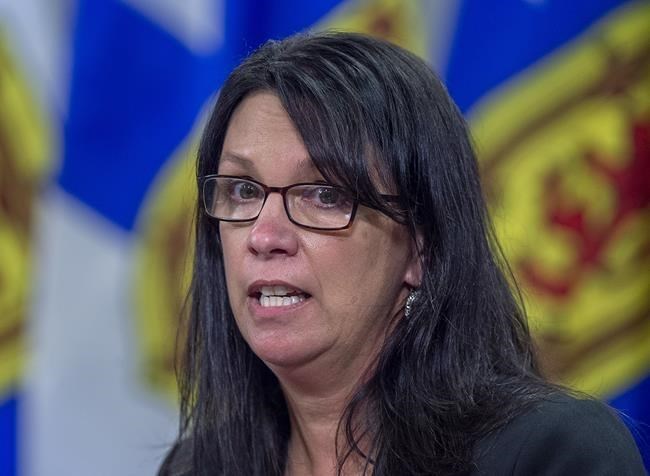HALIFAX — The recent deaths of two people who waited hours to see doctors at Nova Scotia emergency departments have spurred the province to announce changes aimed at providing faster urgent care for patients.
Health Minister Michelle Thompson said Wednesday the deaths of 37-year-old Allison Holthoff and 67-year-old Charlene Snow have "added a sense of urgency" for action.
“To be clear, most of these improvements have been in the works for some time … many months of work have gone into what’s happening today,” Thompson told reporters. “Based on recent events in emergency rooms in the province and under the premier’s direction, we have accelerated these actions.”
Holthoff died Dec. 31 after waiting seven hours for treatment in Amherst, N.S., and Snow died Dec. 30 after giving up on seeing a doctor at a Cape Breton ER about flu-like symptoms and jaw pain. Their stories increased pressure on a government that was elected in August 2021 on a platform focused almost entirely on addressing problems in the province's health-care system.
The changes announced Wednesday include creating doctor-led triage teams that will focus on admitting patients more quickly into emergency departments, and assigning extra physician assistants and nurse practitioners to emergency rooms. Officials said they will begin immediately recruiting physician assistants for the ERs of the South Shore Regional Hospital, in Bridgewater, N.S., and the Halifax-area Dartmouth General Hospital.
The government said it will expand a co-ordination centre that provides real-time data to emergency departments about the availability of beds across the health system, and about what tests are needed to more quickly discharge patients. The centre's data is offered through an application that currently serves hospitals in the Halifax area; access to the app will be extended to the province’s three other health zones by the end of March.
The province said its goal is to have one "patient advocate" in every emergency room by Saturday. The non-medical advocates are there to comfort people waiting to be seen by health-care workers and to assess patients' needs.
Thompson said there is also a plan to expand the use of virtual care in emergency departments for patients with less urgent medical needs.
The minister said she couldn’t quantify by how much time the changes announced Wednesday will reduce wait times, or how much they will cost.
“I would hope that the care will absolutely be ready, responsive and reliable in our emergency rooms,” Thompson said. “Everything that we can do to support the care and comfort of patients and to support the ability of health-care workers to provide effective, efficient care is a benefit to all of us.”
Karen Oldfield, CEO of Nova Scotia’s health authority, said some of the changes have come about as a result of consultations with front-line health workers.
“If there is a good idea that we can implement quickly, we’re going to do it,” said Oldfield, who last week received a letter complete with a list of 59 recommendations for improving urgent care delivery, from the union representing nurses and other workers at the Halifax Infirmary emergency department.
Liberal Leader Zach Churchill said a critical question left unanswered by the government Wednesday is where the workers will come from to staff ERs and hospitals plagued by shortages.
“They are making new positions to deal with the crisis in our ERs — and where are these people coming from?” he said. “We did not hear anything about a recruitment plan or even a retention plan.”
Independent MLA Elizabeth Smith-McCrossin, who has been advocating for Holthoff’s family, was skeptical about the moves. “I’m not assured that anything is going to change,” she said. “There’s huge (system) gaps and it’s not enough.”
Meanwhile, the government said it will train more paramedics by extending a community college program in September to campuses in Pictou County and Yarmouth, N.S.
Emergency Health Services will also be adding a second airplane to its air ambulance fleet. Doing so, the agency said, will free up more ground ambulances for emergencies in local communities. The service currently has a primary and backup helicopter and one airplane.
Jeff Fraser, executive director with Emergency Health Services, said the agency hopes to acquire a new plane from PAL Airlines by mid-April that will carry two patients at a time. The estimated annual cost is $4.5 million.
“This alone is not going to help all of the issues, but it is going to help with moving some of these patients from farther distances,” Fraser said.
This report by The Canadian Press was first published Jan. 18, 2023.
Keith Doucette, The Canadian Press



